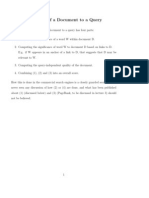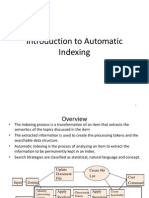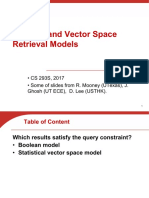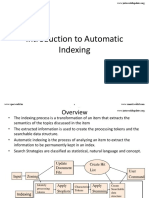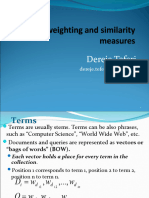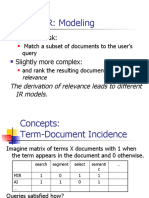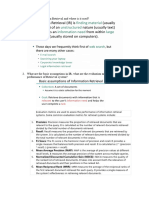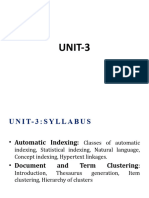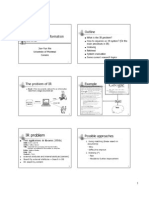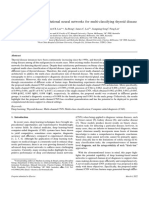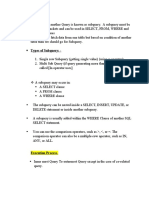0% found this document useful (0 votes)
68 views16 pagesImplementation
The document describes the basic steps to implement a vector space retrieval model: [1] preprocess documents by tokenizing, removing stop words, and stemming; [2] build an inverted index that maps terms to the documents they appear in along with term and document frequencies; [3] use the inverted index to retrieve documents for a query and incrementally calculate cosine similarity scores; [4] rank documents by their similarity scores. Key aspects are weighting terms based on tf-idf, evaluating using precision and recall, and the linear time complexity of indexing.
Uploaded by
Rihab BEN LAMINECopyright
© © All Rights Reserved
We take content rights seriously. If you suspect this is your content, claim it here.
Available Formats
Download as PDF, TXT or read online on Scribd
0% found this document useful (0 votes)
68 views16 pagesImplementation
The document describes the basic steps to implement a vector space retrieval model: [1] preprocess documents by tokenizing, removing stop words, and stemming; [2] build an inverted index that maps terms to the documents they appear in along with term and document frequencies; [3] use the inverted index to retrieve documents for a query and incrementally calculate cosine similarity scores; [4] rank documents by their similarity scores. Key aspects are weighting terms based on tf-idf, evaluating using precision and recall, and the linear time complexity of indexing.
Uploaded by
Rihab BEN LAMINECopyright
© © All Rights Reserved
We take content rights seriously. If you suspect this is your content, claim it here.
Available Formats
Download as PDF, TXT or read online on Scribd
/ 16

